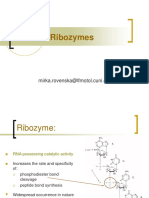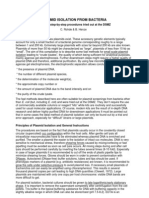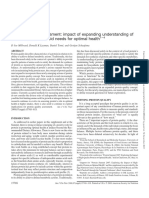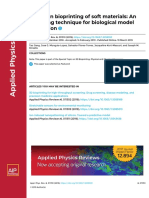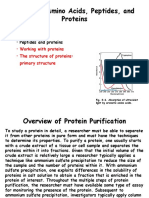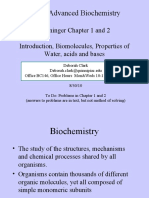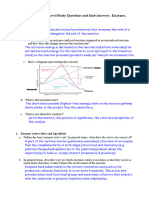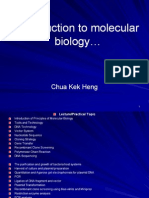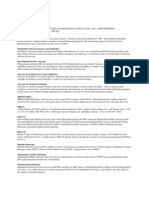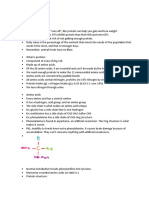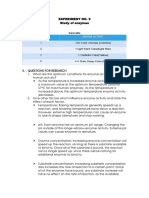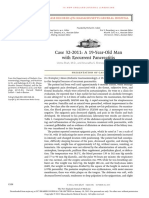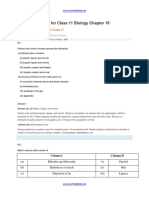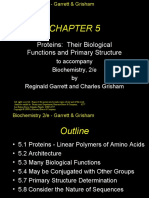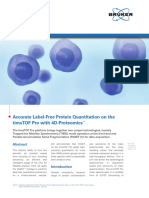0% found this document useful (1 vote)
271 views24 pagesAmino Acids & Protein Structure
This document provides answers to problems from Chapter 2 of a biochemistry textbook. It discusses the properties of various amino acids, including their names, abbreviations, solubility, and side chain characteristics. It also covers topics like peptide bonding, amino acid sequence versus composition, protein structure, and how proteins interact with membranes. The problems address foundational concepts in protein structure and function.
Uploaded by
Dawlat SlamaCopyright
© © All Rights Reserved
We take content rights seriously. If you suspect this is your content, claim it here.
Available Formats
Download as DOCX, PDF, TXT or read online on Scribd
0% found this document useful (1 vote)
271 views24 pagesAmino Acids & Protein Structure
This document provides answers to problems from Chapter 2 of a biochemistry textbook. It discusses the properties of various amino acids, including their names, abbreviations, solubility, and side chain characteristics. It also covers topics like peptide bonding, amino acid sequence versus composition, protein structure, and how proteins interact with membranes. The problems address foundational concepts in protein structure and function.
Uploaded by
Dawlat SlamaCopyright
© © All Rights Reserved
We take content rights seriously. If you suspect this is your content, claim it here.
Available Formats
Download as DOCX, PDF, TXT or read online on Scribd
/ 24

